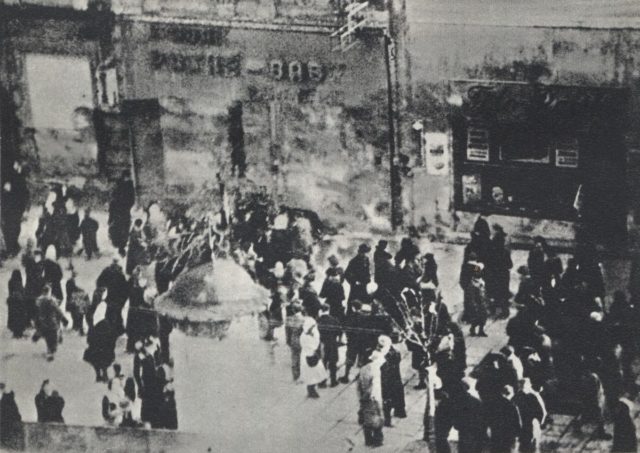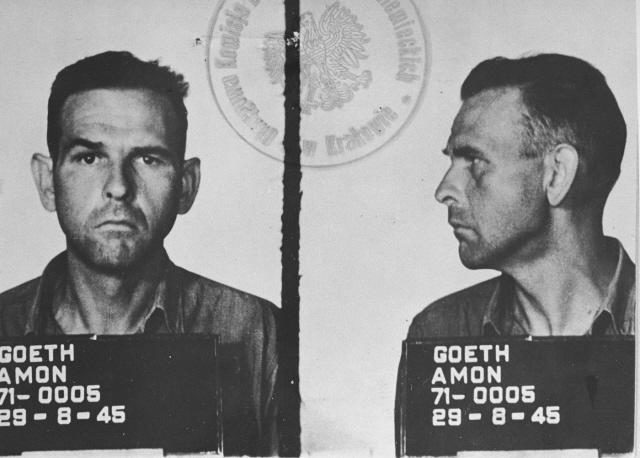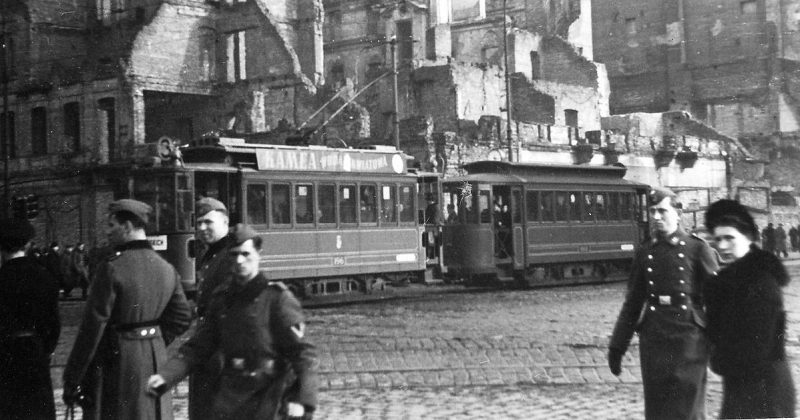The former home of Amon Goeth, infamous commandant of the Kraków-Płaszów concentration camp in Płaszów in German-occupied Poland, has been sold for conversion into a luxury villa. It does not bother the new owner one bit that at one time it housed Goeth, who supervised the murder of at least 8,000 inmates at the forced labor camp at Plaszow and who personally shot some of them.
The opinion of the new owner, Artur Niemyski, is that the building on Jerozolimska Street was occupied for only a short period by the Nazi, which should not exert any influence forever. A number of houses in the area were occupied by Nazis.
In the film Schindler’s List by director Steven Spielberg, actor Ralph Fiennes convincingly played Goeth.
One of the most outstanding and sickening scenes in the movie is when Goeth is shown coming out on the balcony of the house one morning, nonchalantly picking up a powerful rifle and arbitrarily shooting prisoners working in the quarry below.
Although that scene was more fiction than fact, there is no doubt that Goeth shot prisoners on a whim and at random.
One former prisoner, Willie Sterner, remembered when he was working in the camp paint shop when Goeth appeared and ordered to know why 30 men were working there rather than the official number of four. When the man who described himself as the foreman did not provide the answer Goeth wanted to hear, he went crazy. He took out his pistol and, in front of all the other men, shot the man. The father of the man who was killed was in the second row of men and watched the murder of his son.
His biggest delight was killing en masse, wrote Sterner in his memoirs, The Shadows Behind Me. He killed people if he did not like their faces. They were easy targets for the Nazis because there was no place to hide.

The horror Goeth meted out was not restricted to the camp, terror reigned in the house on Jerozolimska Street as well.
One of those assigned to work in the house, a young Jewish maid, Helen Horowitz experienced Goeth’s psychopathic sadism personally. On one occasion, he demanded to know why his uniform sleeve had a small stain.
There was no stain, she recalled later, the stain could not be seen.
She told him that cleaning the uniform was not her responsibility but that of his shoe boy.
Goeth hit Horowitz in the face with such force that he perforated her ear and she heard bells ringing. He grabbed her head and hit her so forcefully blood spurted from her ear.
Through her pain, she noticed that once Goeth saw blood, he seemed satisfied.
In another instance, Goeth threw a knife at her for not making an extra place setting at the table.
Injured, she could not walk. By strength of will, Horowitz ignored the pain and ran into the kitchen. And then she saw that he’d cut through a vein, and since then her leg has been the cause of much suffering.
Helen Rozensweig was another maid who was frequently assaulted at Goeth’s hands.
She recalled in the biography of Oskar Schindler by David Crow, the terrible fate of Lisiek, a young valet who went to the stable to get a carriage for a guest after a party. When he returned, Goeth questioned him as to why he did that without approval. Lisiek, terrified, did not answer and Goethe shot him dead.
A person would assume that Goeth came from a highly dysfunctional family but in fact, the opposite is true. His father was a prosperous publisher in Vienna, and at university Goeth studied agriculture.
Standing 6 feet 4 inches tall, he was a gifted sportsman whose time was spent more on the sports field than attending lectures.
Goeth abandoned university and, like many others without purpose, was attracted to the violent nature of Nazism. He rose through the ranks of the SS swiftly, earning a reputation for being a good administrator and a brutal, effective liquidator of Jewish ghettoes.
He was the obvious choice to manage the Krakow-Plaszow camp at the age of 34.

Goeth lived well in his villa, unlike the Jewish prisoners living in crowded freezing blockhouses where disease and lice were widespread. The lack of food was so pronounced Jews would stand outside the kitchen block and search through the rubbish for food scraps. Ukrainian SS members would shoot the foragers.
Time ran out for Goeth after his capture by American troops at the war’s end, and he was given over to the Poles, who put him on trial in the fall of 1946.
He did not apologize for any of his actions, pled not guilty, arguing he was only following orders. Furthermore, it was others who did the killing, not him, Mail Online reported.
Goeth was hung on Sept. 13, 1946. As the noose went around his neck, still unrepentant, he mumbled: ‘Heil Hitler.’
Some are of the opinion that the villa should be bulldozed and because of its history, it could never be called a home.
